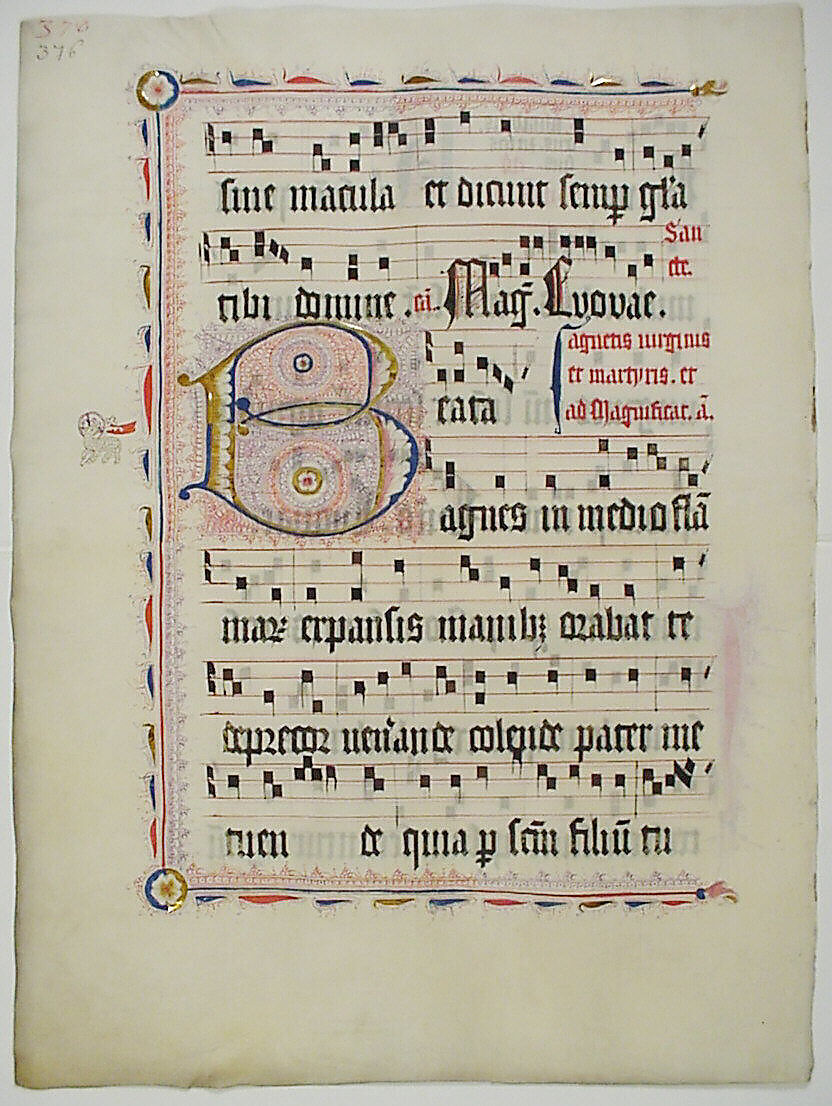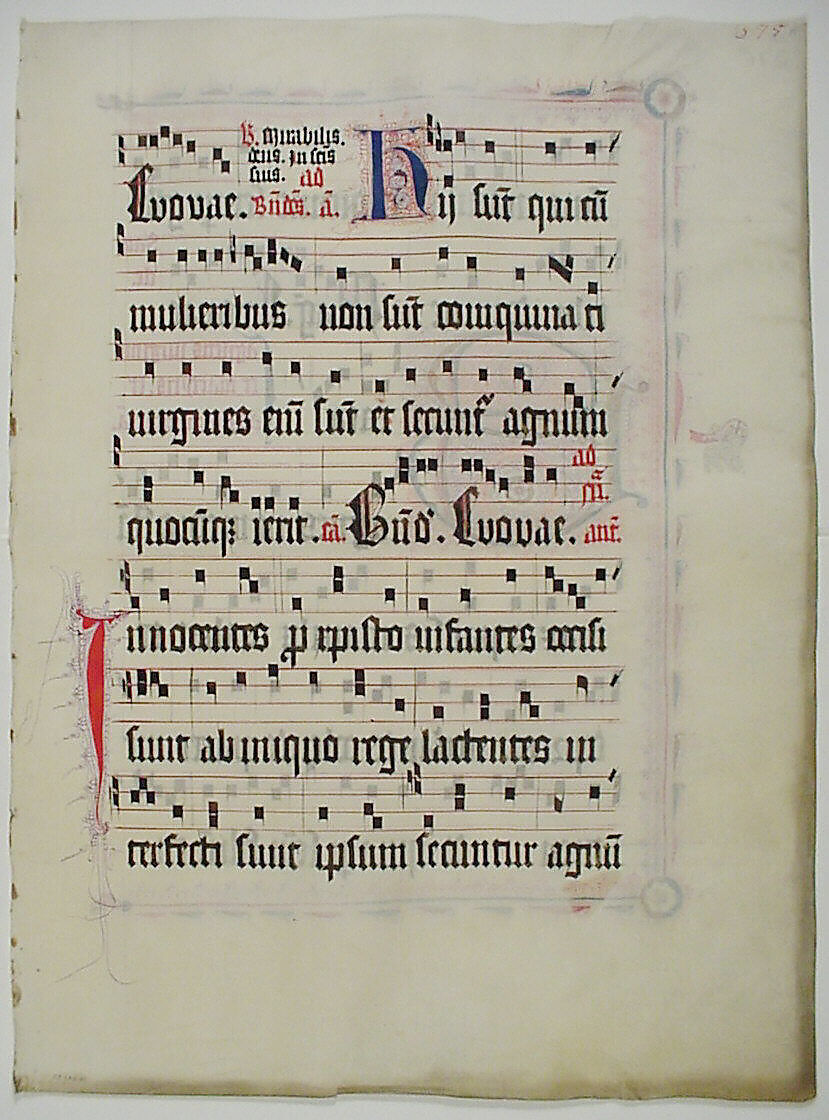3 Manuscript Leaf with Initial B, from an Antiphonary


3.1 Key Details
- Estimated Value: $3,000 - $8,000 USD (fair market value as of 2025)
- Dimensions: 51.7 cm H × 38.2 cm W
- Current Location: The Metropolitan Museum of Art, New York
3.2 Overview
This illuminated manuscript leaf features a decorated initial “B” from a 15th-century German Antiphonary. Created between 1425-1550 by an unknown artist from the Mainz School, the leaf is executed in tempera, ink, and metal leaf on parchment. It represents a single folio from what was once a large choir book used for liturgical singing in a church or monastery.
3.3 Subject Matter & Iconography
The recto displays a magnificent initial “B” beginning “Benedicta tu,” the Magnificat antiphon for the Feast of St. Agnes. The letter is rendered in brilliant blue and red with intricate penwork and burnished metal leaf ground, surrounded by delicate foliate border decorations and gold bezants. The verso contains chants for the Feast of the Holy Innocents, featuring a smaller decorated initial “H.”
Both sides contain musical notation written in square neumes on four-line staves, with Latin text in formal Gothic Textualis script. Red rubrics provide liturgical directions, such as “ad Magnificat” on the recto. The folios are numbered 375 (verso) and 376 (recto) in period manuscript ink.
3.4 Cultural & Art Historical Context
This leaf emerged from Mainz during a pivotal moment in European history—the decades immediately preceding Johannes Gutenberg’s invention of movable type printing in the same city around 1450. It represents the final flowering of a millennium-old scribal tradition, embodying the sophisticated manuscript production that would soon be transformed by printing technology.
The illumination exemplifies the German Gothic style associated with the Mainz School, characterized by vibrant primary colors, delicate thread-like penwork flourishing, and the integration of text, music, and decoration. As part of an Antiphonary, this large-format leaf was designed for communal use, allowing multiple choir members to read from it simultaneously when placed on a lectern during the Divine Office.
The leaf’s substantial size and precious materials—including metal leaf and rich tempera pigments—reflect both the practical needs of liturgical performance and the medieval belief that beautiful objects glorified God and honored sacred texts.